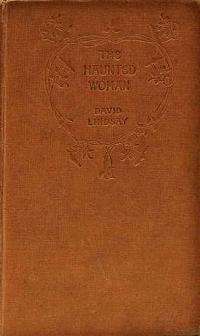The Haunted Woman
 Cover of first edition | |
| Author | David Lindsay |
|---|---|
| Country | United Kingdom |
| Language | English |
| Genre | Fantasy novel |
| Publisher | Methuen & Co. Ltd. |
Publication date | 1922 |
| Media type | Print (Hardback) |
| Pages | 197 pp. |
The Haunted Woman is a dark, metaphysical fantasy novel by David Lindsay. It was first published, somewhat cut, as a serial in The Daily News in 1921. It was first published in book form by Methuen & Co. Ltd., London, in 1922. The work supposedly marked Lindsay's attempt to write a more "commercial" novel after the initial failure of his first work, the classic A Voyage to Arcturus (1920), though he began it before that work was published.[1] It was reissued by Gollancz in 1947. Its importance in the history of fantasy literature was recognized by its republication by the Newcastle Publishing Company as the fourth volume of the celebrated Newcastle Forgotten Fantasy Library in March, 1975; the Newcastle edition was the first American edition. Later editions were issued by Borgo Press (1980), Canongate Books (1987),[2] Wildside Press (2003), and Tartarus Press (2004).[3]
Plot summary
Isabel Loment, engaged to the ordinary and unexceptional Marshall Stokes, leads a peripatetic existence as the ward of her aunt, Ann Moor. Their travels take them to the downlands of Sussex, to Runhill Court, an ancient home owned by Henry Judge. There Isabel discovers a strange staircase few can see, which leads upwards to three doors. She chooses one, which opens onto a room that appears to exist only part of the time; what might lie behind the other doors remains a mystery. In the room she reencounters Judge. There they find new insights and are able to express themselves in new ways, but are unable to recall what has transpired there when they leave. They develop a disturbing parallel relationship in the mysterious room, which ultimately culminates in the death of Judge and the rupture of Isabel from Marshall.
Copyright
The copyright for this story has expired in Australia, and thus now resides in the public domain there. The text is available via Project Gutenberg Australia.[4]
Notes
External links
- Extensive discussion at Stuck-in-a-Book
- Entry on the work at Tartarus Press
- Entry on the work at "Violet Apple: The Life and Works of David Lindsay" website